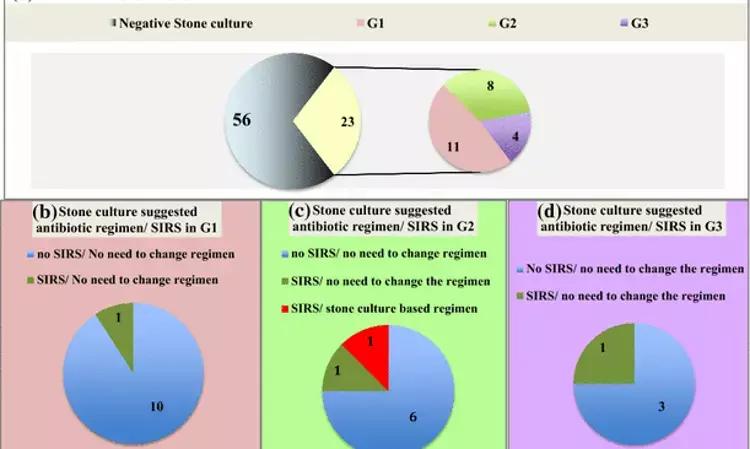Larger Stones, Positive Urine Culture And Higher Comorbidity Index Predict Urinary Septic Shock After PCNL: Study
- byDoctor News Daily Team
- 05 July, 2025
- 0 Comments
- 0 Mins

Larger stones, positive preoperative urine culture and higher Comorbidity Index may predict urinary septic shock after PCNL suggests a study published in the International Brazilian Journal of Urology.
The study was done to identify risk factors for urinary septic shock in patients who underwent percutaneous nephrolithotomy (PCNL). Data from PCNL procedures performed between January 2009 and February 2020 were retrospectively analyzed. The study included all patients over 18 years old with kidney stones larger than 15 mm who underwent PCNL. Patients who underwent mini-PCNL or combined surgeries, such as ureteroscopy or bilateral procedures, were not included in the study. Logistic regression was conducted to determine the risk factors for urinary septic shock within 30 days post-operation in patients who underwent PCNL. RESULTS: Urinary septic shock was observed in 8 out of the 1,424 patients analyzed (0.56%).
The presence of comorbidities, evaluated using the Charlson Comorbidity Index (CCI) (OR 1.46 [CI 95% 1.15-1.86], p=0.01), larger stones (41.0 mm [IQR 30.0-47.5 mm] vs. 24.0 mm [IQR 17.0-35.0 mm], OR 1.03 [CI 95% 1.01-1.06], p=0.04), and a positive preoperative urine culture (OR 8.53 [CI 95% 1.71-42.45], p < 0.01) were shown to significantly increase the risk of postoperative urinary septic shock. Patients with a CCI > 2, larger stones (≥ 35 mm), and a positive preoperative urine culture were at even higher risk of urinary septic shock (OR 15.40 [CI 95% 1.77-134.21], p=0.01). Patients with larger stones, positive preoperative urine culture, and a higher CCI are at risk for urinary septic shock after PCNL. These findings are of utmost importance for optimizing the perioperative care of these patients to prevent life-threatening complications.
Reference:
Danilovic, Alexandre, et al. "High-risk Patients for Septic Shock After Percutaneous Nephrolithotomy." International Braz J Urol : Official Journal of the Brazilian Society of Urology, vol. 50, no. 5, 2024, pp. 561-571.
Disclaimer: This website is designed for healthcare professionals and serves solely for informational purposes.
The content provided should not be interpreted as medical advice, diagnosis, treatment recommendations, prescriptions, or endorsements of specific medical practices. It is not a replacement for professional medical consultation or the expertise of a licensed healthcare provider.
Given the ever-evolving nature of medical science, we strive to keep our information accurate and up to date. However, we do not guarantee the completeness or accuracy of the content.
If you come across any inconsistencies, please reach out to us at
admin@doctornewsdaily.com.
We do not support or endorse medical opinions, treatments, or recommendations that contradict the advice of qualified healthcare professionals.
By using this website, you agree to our
Terms of Use,
Privacy Policy, and
Advertisement Policy.
For further details, please review our
Full Disclaimer.
Recent News
TN NEET Counselling round 3 dates revised, details
- 25 October, 2025
Silchar fake doctor arrested for running bogus med...
- 25 October, 2025
Merck gets USFDA priority review for 2 application...
- 25 October, 2025
Daily Newsletter
Get all the top stories from Blogs to keep track.


0 Comments
Post a comment
No comments yet. Be the first to comment!